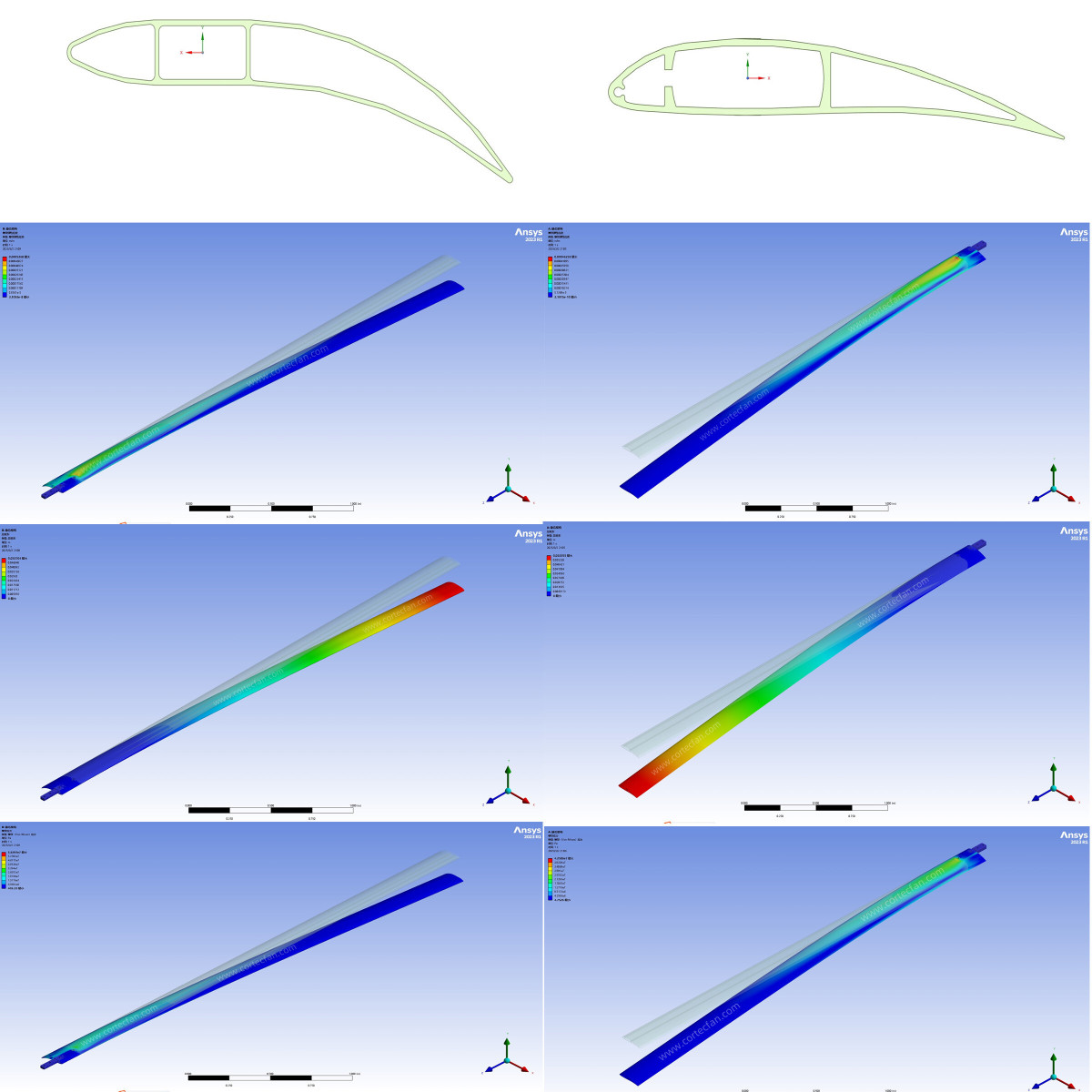1. The core issue of blade structure design
When the HVLS fan is in operation, the blades will be subjected to continuous, stable and high-frequency centrifugal loads, wind loads and vibration stresses. If the blade structure is not strong enough, it is easy to cause cracks, fatigue damage or even fall-off accidents; if the structural rigidity is insufficient, it may cause large swings, reduce air thrust efficiency and shorten service life. Therefore, designing a blade structure with high strength, high rigidity and light weight is the core goal of engineering design.
2. Comparative analysis of traditional and innovative structures
We compared the traditional rectangular rib structure (structure A) with the aerodynamically optimized multi-cavity structure (structure B) independently developed by our company. The following is a comparison of the cross-sectional structures of the two blades and the finite element simulation results:
Structural difference analysis:
Structure A: It adopts a simple rectangular cavity + straight reinforcement ribs, which has a simple structure and is easy to process, but the torsional rigidity and stress distribution are not ideal, and there is a problem of local concentration.
Structure B: It adopts an asymmetric multi-cavity design, which contains streamlined support beams and local reinforcement ribs, can effectively guide stress transfer, and has better overall rigidity and distribution strength.
Finite element simulation results are shown (as shown in the figure):

Comparison of overall deformation: Structure B has better deformation control ability, and its maximum displacement is significantly lower than that of Structure A, indicating that its bending stiffness is stronger.
Stress distribution: Structure A has stress concentration at the root and abdomen, which poses a potential fatigue risk; Structure B has uniform stress distribution, which effectively reduces local stress peaks.
Overall stiffness: The overall modality of Structure B is more stable, which effectively reduces structural swing at high speeds and improves long-term operating reliability.
3. Summary of Design Advantages
Through structural and simulation comparison, the innovative design of Structure B shows significant advantages:
Weight reduction: While maintaining strength, Structure B optimizes material distribution to achieve an overall weight reduction of about 15~20%;
Strength improvement: The maximum stress decreases by about 18%, and the ultimate bearing capacity increases by more than 22%;
Bending stiffness enhancement: The maximum displacement under unit load is reduced by 30%+, improving dynamic stability;
Better aerodynamic shape: In line with the streamlined airfoil design, it reduces air resistance and improves wind energy conversion efficiency;
Longer service life: Stress concentration is significantly reduced, effectively delaying the initiation and expansion of fatigue cracks.
4. Conclusion: Structural innovation drives performance leap
Through systematic mechanical modeling, aerodynamic optimization and simulation verification, our company has successfully liberated the HVLS fan blades from the dilemma of "weight-strength constraints" and achieved a new breakthrough in high performance and lightweight.
We will continue to be data-based and engineering-driven, constantly break through the bottleneck of fan technology, and provide customers with higher performance, safer and more reliable air flow solutions.
CONTACT US
Please use the form below to get in touch.
If you need a reply we will get in touch as soon as possible.
